![]()
|
Pinder,
Bourne & Hope |
Location and period of operation:
|
Pinder, Bourne & Hope |
Burslem |
1851 |
Jan 1862 |
Earthenware
manufacturer at the Fountain Place
Works (c.1851-1860) and also at Nile Street
(1860 to Jan 1862),
Burslem,
Stoke-on-Trent, England.
|
Previously: Thomas Pinder (c1848-1851)
Subsequently: Pinder, Bourne & Co (Jan 1862 to 1882) and Hope & Carter (Jan 1862 to 1880)
Selected by the Committee for the Staffordshire Potteries
to exhibit at the Paris Universal Exhibition of 1855
London Gazette
January 14, 1862
notice of the dissolution of the partnership of Pinder, Bourne and Hope on the 13th January 1862
Thomas Pinder and Joseph Harvey Bourne continued at the Nile Street Works as Pinder, Bourne & Co
John Hope was joined in partnership with John Carter and they continued at the Fountain Place Works as Hope & Carter
Dresden pattern
Pinder, Bourne & Hope introduced the 'Dresden' pattern which was based on the Indian Tree design first introduced around 1801 by the Coalport China Factory.
The pattern, based on Indian textile designs, incorporates the crooked branch of a tree surrounded by flowers and leaves. The Dresden pattern was continued by the successor companies - Pinder, Bourne & Co. and Doulton & Co.
plate in the Dresden pattern - blue monochrome
platter by Pinder, Bourne & Hope in the Dresden pattern - polychrome
Dresden
P B & H
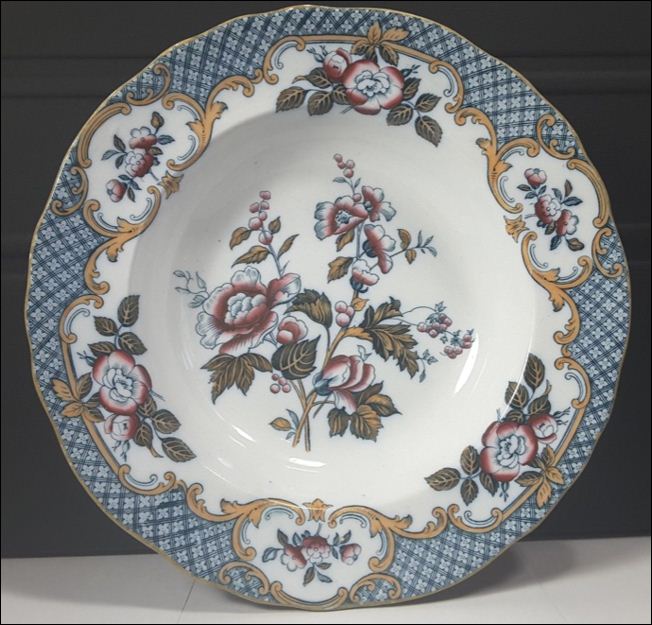
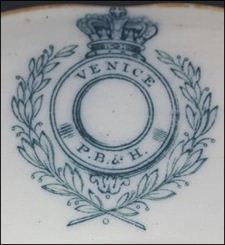
plate in the Venice
pattern
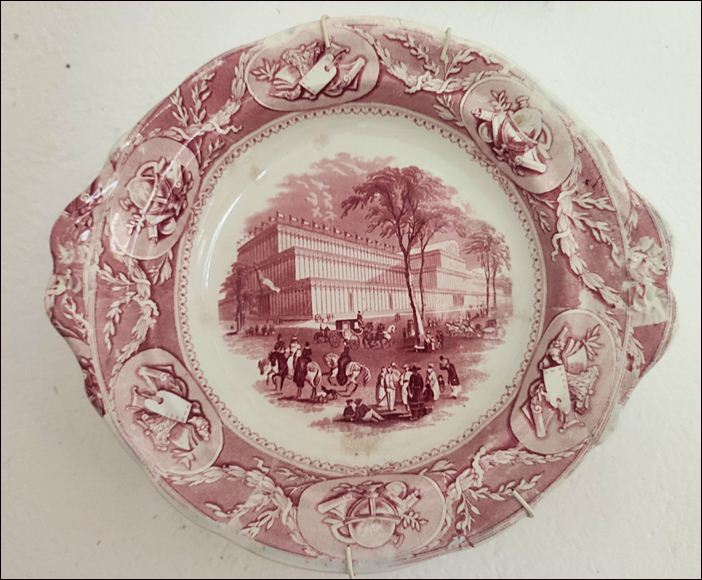 pink & white transferware bowl depicting the Crystal Palace built for the 1851 Great Exhibition the border depicts symbols for industry, engineering, and music.
|
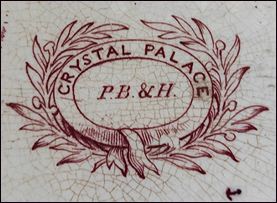 Crystal Palace P.B. & H Ware with an engraving of the Cystal Palace was also made by the North Staffordshire potter T Godwin and the Glasgow potters J. & M. P. Bell and Robert Cochran & Co. |
photos courtesy: Donatella Vinotti
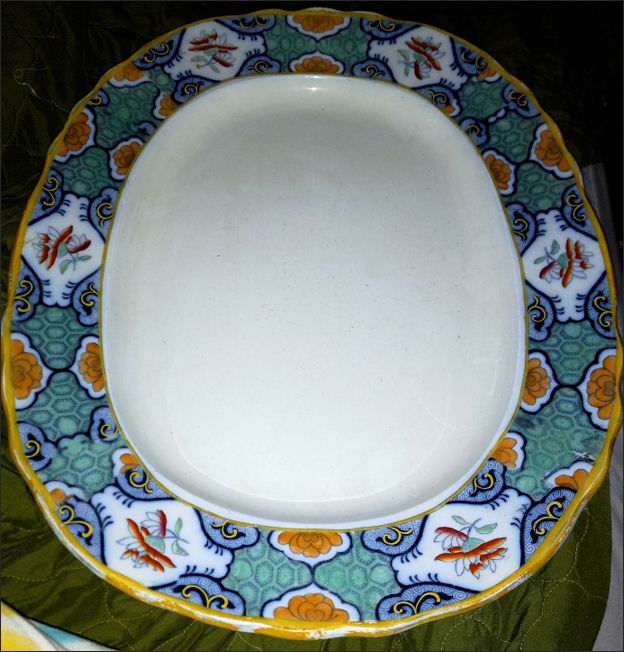
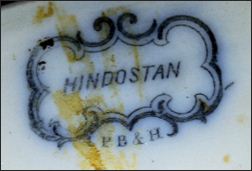
platter in the HINDOSTAN
pattern
photos courtesy: Gillian Pierce
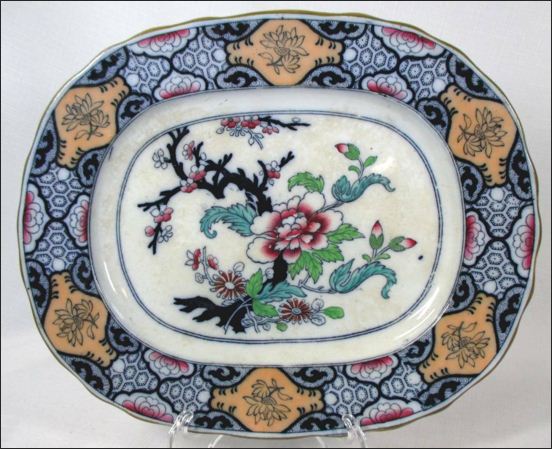
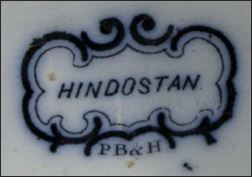
variation of the basic Hindostan pattern which was
a popular pattern of Pinder, Bourne & Hope
which they produced in monochrome blue as well as hand coloured variants.
'Hindostan' was also used as a pattern name by Minton & Co and Dunn, Bennett & Co
the Victorians were facinated by
all things 'oriental' - the use of the name Hindostan
reflects this as it was a name used for 'Colonial India'
Marks &
initials used on
ware for identification:
P. B. & H.
PINDER BOURNE
& HOPE
 Campanula P. B. & H |
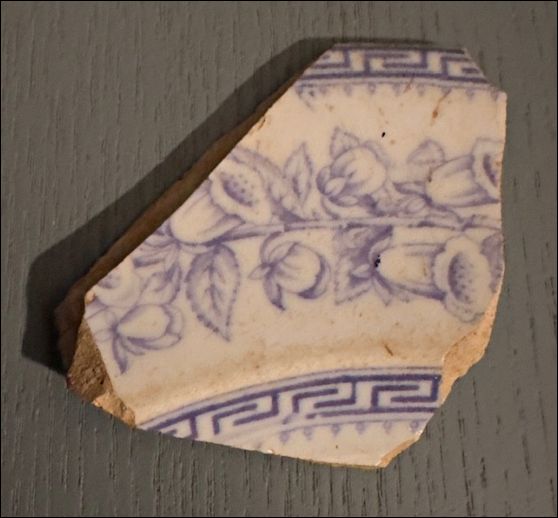 Campanula (bellflower) pattern |
| P. B. & H. Campanula shard of pottery found (2024) on the mud banks of the River Thames in the Port of London, just below the Victoria Tower Gardens not far from The Palace of Westminster. - courtesy: Robert Scrope-Howe |
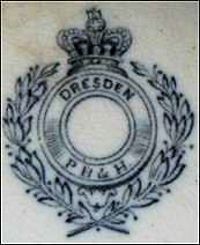

P B & H
Typical marks of
Pinder, Bourne & Hope
'DRESDEN' and 'VENICE' are pattern names
this style of mark was continued
by Pinder, Bourne & Co.
and for a short time by Doulton & Co.
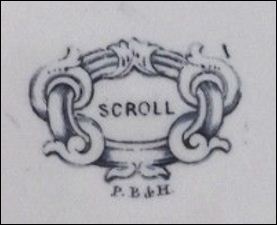
SCROLL
P B & H
'SCROLL' is the pattern name
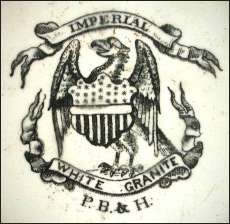
IMPERIAL
WHITE
GRANITE
P.B. & H.
mark with the US eagle and
shield
use on ware produced for the
American Market
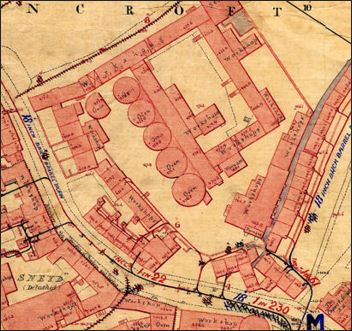
1851 map of the Nile Street
Works
- click for more information -
Questions, comments, contributions? email: Steve Birks